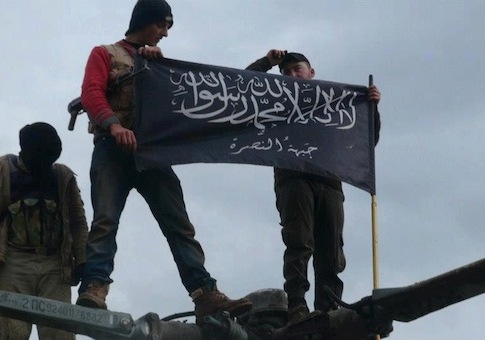A panel of terrorism and national security experts at the Foundation for Defense of Democracies said Wednesday that al Qaeda’s brand is the strongest its ever been, contrary to administration claims.
Bruce Hoffman, the director of the Center for Security Studies, said that the terrorist group has become more dangerous and has a larger international presence than eight years ago.
"You no longer have one big threat in one place with one clear leader, but many threats in a variety of places," Hoffman said. "That I think is testimony to al Qaeda’s power. Al Qaeda is present today in more places than it was eight years ago, that’s indisputable."
Al Qaeda currently controls more than 400 miles in the Middle East, according to CNN.
The Obama administration and many in the analytical community have said al Qaeda’s central leadership was no longer influential and that the terror group as a whole was diminishing.
After al Qaeda’s current leader Ayman al-Zawahiri released a propaganda video in January 2014 telling Syrian insurgents to band together, the State Department said that al Zawahiri was the only al Qaeda core leader left and that he spent "more time worrying about his own personal security than propaganda."
Hoffman disputed that notion.
"The core may not be as strong, but the al Qaeda brand I would argue is just as strong if not stronger," Hoffman said.
While al Qaeda’s central leadership has suffered significant losses, al Zawahiri has still managed to maintain influence among affiliates and facilitated the expansion of the al Qaeda network, Hoffman said.
"I think he’s actually achieved the impossible, he’s held the movement together now for three years at a time that it is splintering," he said. "Al Qaeda is in more places today than it was before al Zawahiri took control."
Many in the current administration and analytical community define al Qaeda to consist of only al Qaeda’s central leadership and the affiliates it works with who specifically want to target the United States. According to the FDD panel, this view ignores al Qaeda’s past and mission.
"The fact that a group is not targeting the U.S. at a particular point doesn’t mean they’re not al Qaeda," said senior FDD fellow Daveed Gartenstein-Ross. "Al Qaeda is both an idea and an organization. … Its key goal is not just to target the United States."
Historically, al Qaeda has devoted the majority of its resources to waging insurgencies in the Middle East and parts of North Africa. Prior to Sept. 11, 2001, only one out of 16 al Qaeda recruits would go on to international terrorist activities. The rest would focus on regional insurgencies.
"I think the big popular misconception that we fight pretty regularly is that they’re only interested in mass casualty attacks against the U.S. or the West," said Thomas Joscelyn, senior editor of the Long War Journal. "You actually go back into the history al Qaeda very carefully you realize that is absolutely not true. In fact, most of their assets from the beginning have been devoted to other things."
Although al Qaeda is more active in local conflicts, the panel said that it still has opportunities to attack global targets and U.S. interests as well.
Gartenstein-Ross pointed to the September 2012 attack on the U.S. embassy in Tunisia.
"Members of Ansar al-Sharia were instrumental in the decision to charge the embassy," he said. "That was very opportunistic—it wasn’t local it was against the United States. And I think that illustrates the way you can have both local opportunity and also be focused still on doing damage to Western interests."
Threats to western interests are also present in Syria in the form of the hundreds of westerners joining the insurgency, Hoffman said.
Many western countries are concerned that its residents who have traveled to Syria to fight will come back and wage attacks against their own countries. Furthermore, combatants with passports of countries who participate in the visa waiver program, such as the Netherlands or France, could travel to the United States with ease.
